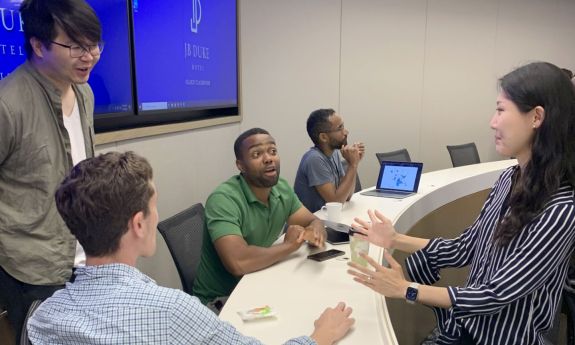Building the Numbers of Black Economists Also Brings Attention to Neglected Issues

“However, the numbers of Black and Latino economists are so low, the cost of losing even one is significant,” he added. “No more than 3 to 4 percent of all new Ph.D.s in economics each year are black; no more than 6-7 percent are Latino. On the [whole], black people are about 13 percent of the U.S. population, and Latinos are about 20 percent of the nation’s population.”
A 1994 study found that there were only 11 Black economists teaching at the nation’s 25 highest-ranked universities. By 2006 that number was 13, many of whom were the same individuals canvassed in the 1994 study.
The underrepresented faculty members also offer perspective and insights into issues affecting their communities that may be overlooked or ignored by their mainstream colleagues in the field of economic.
The areas of study for the DITE conference participants include, race-based housing inequalities, Black healthcare entrepreneurs working to overcome systemic marginalization, and research that seeks ways to close the health and education gap.
Darity also pointed to issues he called relevant to the experience of junior faculty members, including questions surrounding work-family balance, and how the program fellows would approach research, teaching and service to their respective universities, and more widely, their contributions to the profession.
Darity called the program a mentoring experience focused on research projects, “because of the priority research plays in the promotions process.”
The research presentations at the conference were broad and included disparities in access to health care delivery; impacts of factory electrification across North Carolina between 1905 and 1926; desert locusts and infant mortality in Sub-Saharan Africa, and gender differences in remote learning during the COVID-19 pandemic.
Seven faculty members teaching at universities and colleges across the country participated in this month’s program: Kenneth Ford at Wake Forest University; Salama S. Freed from George Washington University, Robert Gonzalez, Georgia Tech; Eduardo Guimaraes, North Carolina A&T State University; Elisa Taveras and Jean-Baptiste, who are both faculty members at the University of Texas Rio Grande Valley; and Luis Baldomero at William and Mary University.
The program’s impact has been significant. Since its inception in 2008, the DITE Fellows Program has assisted a growing cadre of early and mid-career professors get tenure.
Over the past 14 years there have been 127 fellows. Eleven are full professors, three of whom hold distinguished professorships, and 36 are associate professors. The 2017 cohort includes a John Bates Clark medalist, and there are more than 40 papers published in refereed journals written jointly by fellows and mentors since they participated in DITE.
Past DITE fellows include Lisa Cook, who was the first Black woman to serve on the board of governors with the Federal Reserve, Isaiah Andrews, a Harvard professor and John Bates Clark medalist that’s awarded by the American Economic Association awarded to "that American economist under the age of forty who is adjudged to have made a significant contribution to economic thought and knowledge"), and Vickie Bogan, an incoming professor at the Duke Sanford School of Public Policy. Ware is up for tenure at the end of this year. He said DITE has an open-door policy that continued virtually during the pandemic. Ware said he and the other DITE fellows at the height of COVID-19 connected virtually with well-established professors and took advantage of networking opportunities that enabled them to ask where to look for data and where to apply for grants.